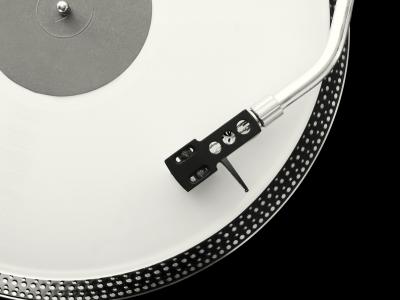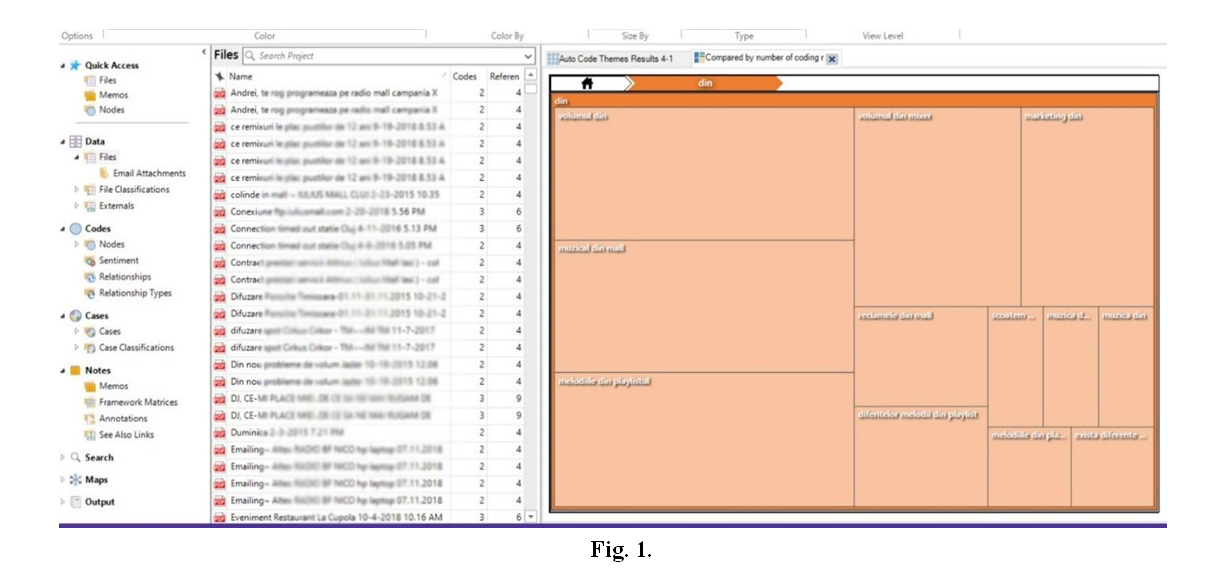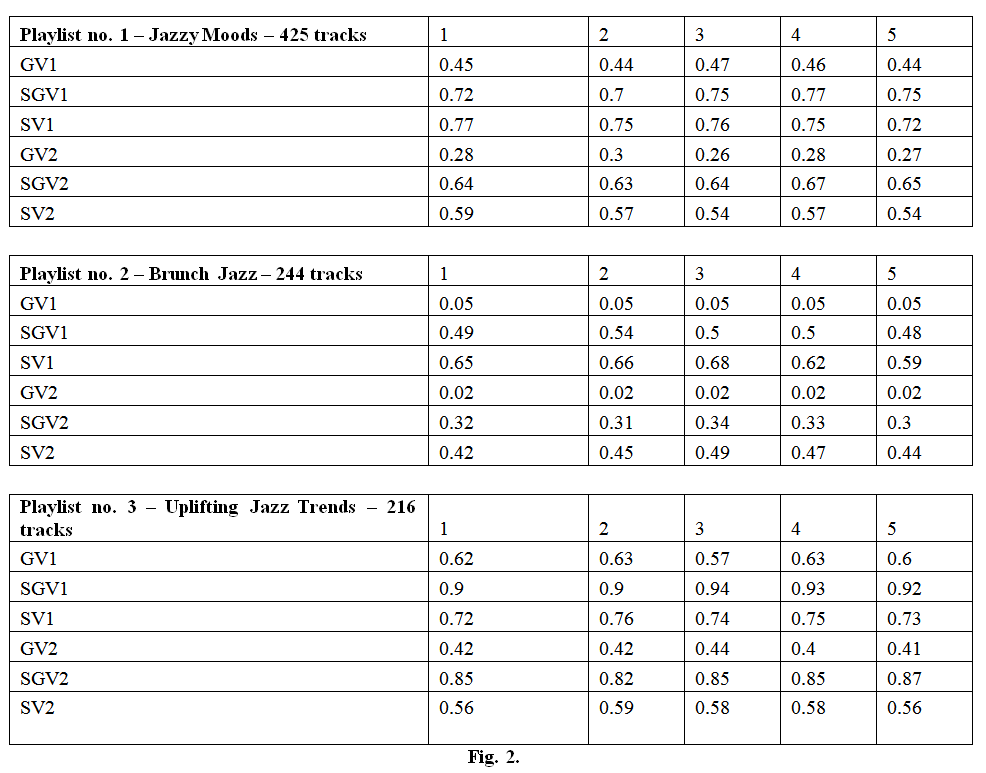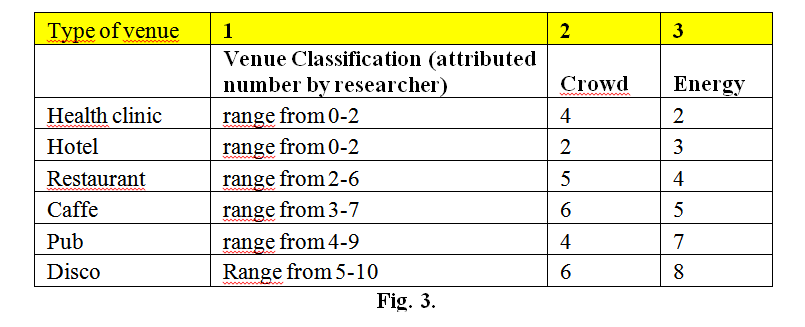Importance of Music Branding from a marketing perspective

Abstract
The most effective way to create brand loyalty is through emotion. A direct way to create emotion in a shopping environment is through music. It is known that music creates a personal connection therefore it can be an efficient marketing tool in the retail business. The questionnaire design was pre-tested and redesigned through personal interviews with marketers during a period of three years and is applied on managers, staff and consumers in the hospitality sector. The data collected creates an output in the form of an algorithm integrated in a smart mobile application.
The application used by venues such as stores, cafes and restaurants create measurable impact, builds brand loyalty and gets constant results. The purpose of this study is to reveal the importance of music branding from a marketing perspective. Higher level of music fit for the brand is more likely to trigger a favourable evaluation of the venue. A mobile application successfully developed can directly create a marketing funnel between business owners and their consumers.
Table of Contents:
1. Introduction
2. Literature Background
3. Defining the Framework
3.1 Brand
3.2 Defining the musical branding
3.3 Music Fit dimension & mall branding
4. Creating the Algorithm
5. From Algorithm to Music Branding
6. Music Fit Tool
7. Conclusion
1. Introduction
Even though music is defined as a key factor affecting our lives, there is still a lot of aspects that scientific research hasn’t yet focused on. Previous research has tried to explain the usage of music in different aspects of our society with direct link to the technological improvements. Since the branding perspective has a wider approach in literature, we have decided to investigate the importance of music branding from a marketing perspective.
The technical coordinates are as follows: usage of background music in the shopping environment and its direct implications in the positive evaluation of a brand. Emotions are subjective and can be hard to evaluate and measured, therefore background music will be used for the purpose of measuring the impact on marketing funnels level for a future evaluation. Conversion of music into metrics has been a very difficult mission for previous researchers. However, in Kotler’s (2010) followed by further additions (2018) for Marketing 3.0 model, a new dimension emerges in the marketing literature under the form of spiritual one. In this case, music is crucial in forms of talent management and cultural mission, subsequently in branding as a starting point in our research. [1]
2. Literature Background
Literature review is pointing out different perspectives with regards to usage of background music in the shopping environment and the importance of using such marketing tool. There is interest in the usage of background music for marketing purposes. In other words, such potential use is different than the operational one, enhancing the need of a new dimension to comply with such usage more accurate. J. Duncan Herrington (1996) [2] examined the use of background music in a supermarket setting and found that shopping time and expenditures increased with the level of preference music. R. Michon has stated his own opinion in the matter of musical branding of malls in the Journal of Business Research, July 2013, at page 577: “Although it is a typically overlooked aesthetic structure, sound is an important design element of a built space devoted to consumerism.” [3]
This idea sends specific consumers to places of consumption considering the musical factor, therefor becomes a key element for marketing tactics. Besides the marketing benefits, music also keeps out the unwanted noises of the commercial infrastructure such as heating and cooling systems, as well as the general social scene. Traffic noise outside, specific surround sounds from constructions or different disturbing noise are also being avoided, therefor background music is considered an element of high importance for the mall patronage. Kotler (1973) has stated that the tangible product represents just a small part of the entire product. Other key factors like services, advertising or sensory ones positively affect the atmosphere of the shopping environment, therefor triggering the window shopper to buy.
Also, Kotler (1973) has reached the conclusion that there should be future research on the ambient factors of such an environment so that there will be a full extent of methods to enhance the capability of buying products of services. [4] Next researchers have further analysed the impact of background music on impulse buying, most of this impact being a positive one. Store environment has positive effect on impulse buying and also arises emotions that may lead towards impulse buying. There is strong relationship between impulse buying and store environment, background music being a variable that mediates such a connection. It is widely known that shoppers respond to music psychologically and behaviourally, thus this connection is enhanced on these two dimensions.
Although most part research has considered time to be a critical factor in explaining how music affects sales, only actual time has been considered. Little consideration has been given to customers’ perceptions of time. Psychological research has shown that the tempo of environmental sounds can alter individuals’ perceptions of the amount of time that has elapsed. (Richard Yalch, 2006). [5] In conclusion, background music can be mediated by the time budget, certain amount of time as variable can be mediated by it enhancing the shopping experience.
3. Defining the Framework
3.1 Brand
The definition of brand and product can be confusing for most of readers; therefore, it is necessary to define such terms from an academic point of view. In Kotler’s perspective (1998, p. 40) people satisfy their needs through products. [6]
So, a product can be anything which is suitable for satisfaction of the given need, while Bauer, Berács (1998, p. 186) state that a product is the sum of physical, aesthetical and symbolic characteristics that have the mission to satisfy customer needs, defining an affectional response. We can conclude that depicted from this theory the definition of a brand, formulated also by Keller, can be defined as a product that has differentiating characteristics, dimensions from other products satisfying the same customers’ needs. (Keller, 1998. p. 4)
3.2 Defining the musical branding
The definition of music branding had to be grounded and adapted on the research framework since there is no such general definition in the literature of practical sector. Many attempts to define the musical branding has been too subjective and is limited to strategic approach from a marketing perspective, social implications or traditions and cultural heritage. The background music in retail establishments usually affects various shopping evaluations such a sales volume, duration of stay in the venue or certain pace dynamics. Consumers and store profiles, purchase timings, and other ambient factors moderate the influence of music. [7]
It is an expensive strategy such as changing the design architecture for a large shopping environment. Atmospherics can therefore be improved using a sound design to differentiate from its competitors or to simply add a new perspective for the costumers. Sound is a spatial event, a material phenomenon which creates an auditive experience for the human ear. Conscious on a personal scale or rather subconscious, all consumers are triggered by audio stimulus in the shopping environment. Most of the seasonal marketing campaigns rely on professional built in audio strategies. The most efficient one is, of course, the Christmas focused campaigns. Such strategies help retailers engage with their consumers and have a higher buying frequency rate. A seasonal campaign is therefore used on a wider scale. What differentiate retailers is the musical branding, consisting of a comprehensive set of tools used by major companies.
The concept of musical branding studied in this research has at its starting point the fluent cooperation with the marketing department of a shopping centre in Iasi, Romania. Such concept has been developed in time through direct interviews with twenty marketers working for a retail shopping centres in the cities of Iasi, Timisoara, Cluj and Suceava. During a period of three years, we have managed to acquire enough database which is encoded in NVivo with the purpose of finding relevant codes, nodes and keywords to establish a musical branding framework for the present research. Since most of the direct correspondence with marketers is in Romanian, as native language, translations to keywords resulted from the graphics below follow the explanations. The NVivo matrix is represented in Fig. 1 and is the result of coding more than 4000 conversations during a period of three years. The conversations are confidential and for the purpose of the research only the keywords resulted are translated and create the framework for the further progress in research.

Qualitative analysis results best describe the interviewees’ perception towards characteristics such as: volume of background music, genre and subgenre variations of music defined as playlist and the usage of jingles and the differences perceived between songs. While volume is a characteristic that can be measured in metrics, the other aspects are in direct relationship with the individual personality of the marketer. Playlist and usage of jingles is affecting directly the perception of musical fit and can be very positive during major changes. The differentiation between songs is perceived by less marketers and can negatively affect their mood. A unitary musical stream according to the marketers interviewed can help create the musical brand.
Although an overall desired perception of the musical stream requires a unitary flow of songs, it may have a negative effect if subjects are exposed to these audio stimuluses over longer periods of time. There is a strong connection between time budget for subjects to be exposed to the same audio stimuluses, so a new feature of musical branding is needed.
3.3 Music Fit dimension & mall branding
For the purpose of defining a musical brand in general, the use case of Palas Mall is selected. Data collected from the interviews is synergistically crosslinked the researcher’s know-how regarding the musical specifications. Such data correlation is possible due to the experimental observation of the playlist used during the period mentioned above. The music preference characteristic is related to the perceived atmosphere due to type of music and individual personality. The type of product dimension which results in the mall branding is directly linked to the emotional attachment, satisfaction with ambience and an effective response which has direct effect in purchase intention, frequency of visit and duration of stay.
Results from interview qualitative analyses suggest that definition of music branding can be subjective to changes during time. This contribute to the formulation of the hypothesis according to which features defining the playlist need an ordering algorithm to better represent the music branding concept. For the use case of Palas Mall, the music branding phenomenon can be analysed both from a marketing and an advertising perspective.
4. Creating the Algorithm
Development of an algorithm that is the construct of a mobile application creating the right soundtrack and easily adjusts to changes in those surroundings. Far more than just playlists, its intelligent system helps the user quickly reflect changes in the mood and number of people present and adapt the music accordingly. Therefore, such application can help the musical branding connecting managers and engaging consumers, giving experiences, exclusivity and trough the music fit dimension, emotions. Location for experiment: coffee & sweets shop situated in the walk by centre of Iasi. The questionnaire has been applied to both staff and consumers in the shop for a period of 20 days. The background music is streamed with a mobile application prototype installed on the tablet located in the shop. Playlist database consists of 425 tracks with genres varying from jazz, pop and electronic. Using Fisher Yates Shuffle algorithm, playlist is streamed and tested with results based on genre, subgenre and stamina variation. The algorithm is applied five times for each playlist until a consecutive third reiteration grows into a playlist formed of 216 tracks, as described below:

Music variation 1st grade by genre: GV1 = genre 1st grade variation; SGV1 = subgenre 1st grade variation; SV1 = stamina 1st grade variation; Stamina = a dimension which includes and is a result of BPM (beats per minute), gamma, tempo of the track; GV2 = genre 2nd grade variation; SGV2 = subgenre 2nd grade variation; SV2 = stamina 2nd grade variation.
Musical stream was reiterated based on the consumers feedback until playlist reached 50% of total tracks. Genre, subgenre and stamina variations has direct implication with the music fit dimension studied in our research. The degree of variation is high, but the variation intensity is average so that the linearity and unity of the playlist is maintained. Even if such variation is desirable, the algorithm will create a small varied intensity to a medium one. An extreme variation will have a negative impact. Another case to be avoided is using a gradual decrease or increase of intensity having a very unpleasant outcome in a longer period of time for both consumers and managerial stakeholders Although subjectivity of the playlist can be considered high, the playlist chosen for the research has a high level of similarity in terms of BPM, genres, subgenres and frequency. Using the high expertise of the researchers involved, the playlist is subject of further research. An in-depth analysis of the parameters is to be taken into future considerations as well.
5. From Algorithm to Music Branding
It is widely known that music is used for creating emotions thus marketing strategies involving branding consist of engaging consumers on an exclusivity scale, creating experiences for the purpose of consumer decision making habits. Such algorithm described in the test phase is applied to a diversity of retail venues with the purpose of engaging the consumers and creating complex marketing funnels. Music fit dimension creates the framework for professionals to develop long term strategies. The strategies can be varied and are appropriate for the moment of our times where the big data flow is overwhelming. The more visual stimulation is used on a general scale, the less engagement of consumers. Audio stimulus is growing in importance, so it is becoming effective in various marketing strategies. Algorithms were used in the ancient Greece and all human developments since then have been based on it. Starting 1970 advances in technology have helped human society develop impressive tools in all sectors. Such tools have helped automation of certain processes and enhanced creativity. The purpose of defining music branding is achievable to a wider audience with the help of a mobile application that collects data from both the managerial staff and consumers symmetrically synching the output into the form of the algorithm defined above.
6. Music Fit Tool
Assumption that only one parameter composed of musical characteristics is subjective and more difficult to be measured is justified. All previous research regarding such characteristic of music indicate the hypothesis and it is not the subject for further research. The other two parameters indicating the percentage of venue occupied by crowd and the specifications of the place where musical stream is located can be measured, quantitative data can scale results compared to the ones showed in Fig. 3.

7. Conclusion
There are two main directions that can be taken into consideration for the conclusion. One direction develops from the qualitative analysis output concerning interviews with marketers over a long period of time. This direction points out that the music fit dimension is directly related to the branding of a shopping venue. The hypothesis can be extended to other venues in the hospitality sector such as cafes, restaurants, hotels and shopping assembles. The second dimension is represented by the data collected which creates an output in the form of an algorithm integrated in smart mobile application. The application used by venues such as stores, cafes and restaurants create measurable impact, builds brand loyalty and gets constant results. Higher level of music fit for the brand is more likely to trigger a favourable evaluation of the venue. A mobile application successfully developed can directly create a marketing funnel between business owners and their consumers.
Authors:
UNGUREANU Andrei [1]
LUCA Florin Alexandru [2]
SASU Constantin [3]
[1] PhD Student, University Alexandru Ioan Cuza Iasi, Doctoral School of Economics and Business Administration (ROMANIA)
[2] Technical University Gheorghe Asachi Iasi (ROMANIA)
[3] University Alexandru Ioan Cuza Iasi (ROMANIA)
Contributo selezionato da Filodiritto tra quelli pubblicati nei Proceedings “3rd International Conference Inclusive and Sustainable Economic Growth. Challenges, Measures and Solutions - 2019”
Per acquistare i Proceedings clicca qui.
Contribution selected by Filodiritto among those published in the Proceedings “3rd International Conference Inclusive and Sustainable Economic Growth. Challenges, Measures and Solutions - 2019”
To buy the Proceedings click here.



